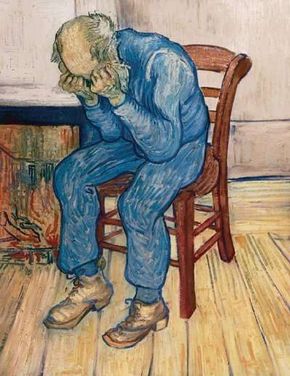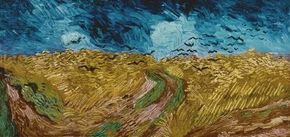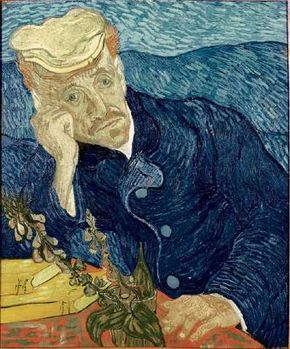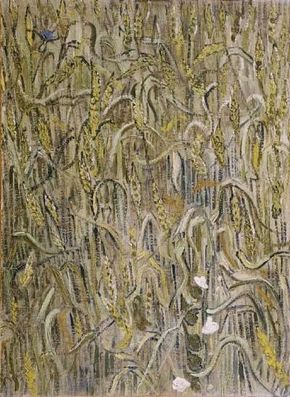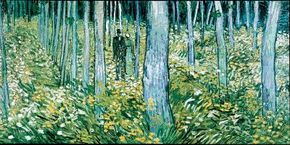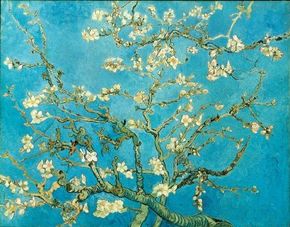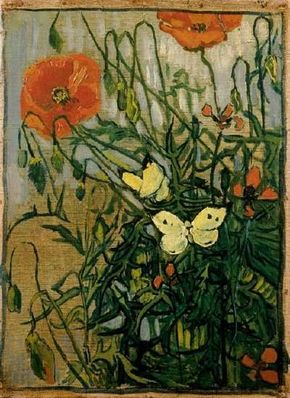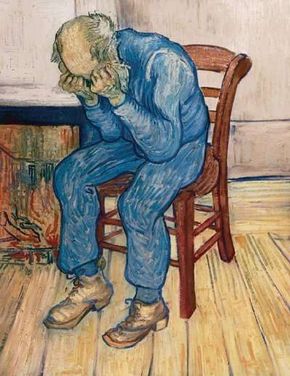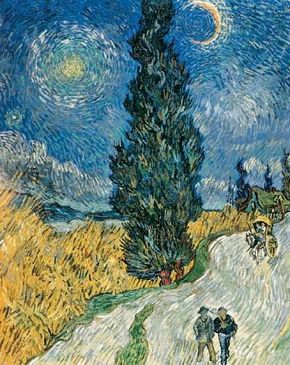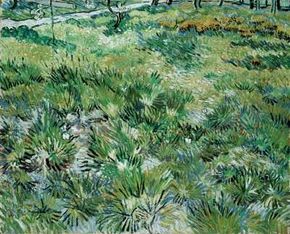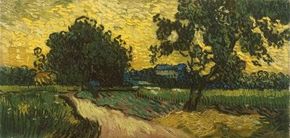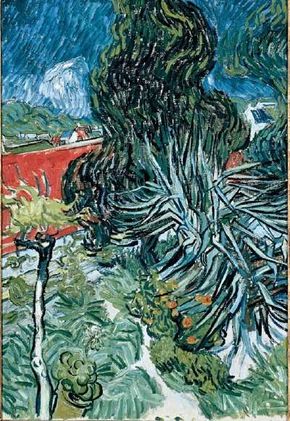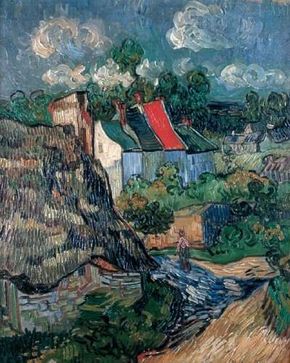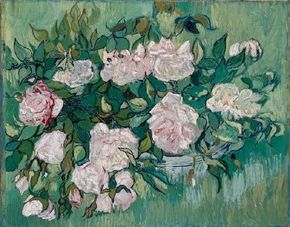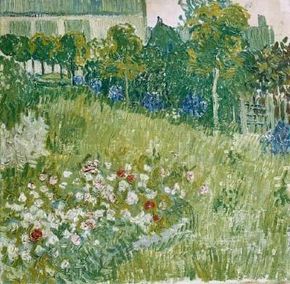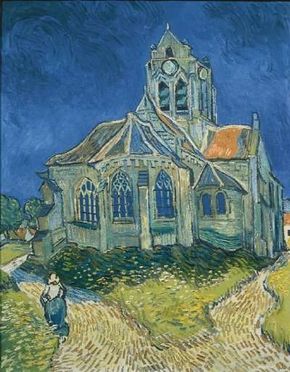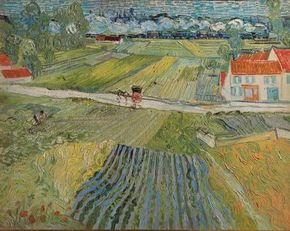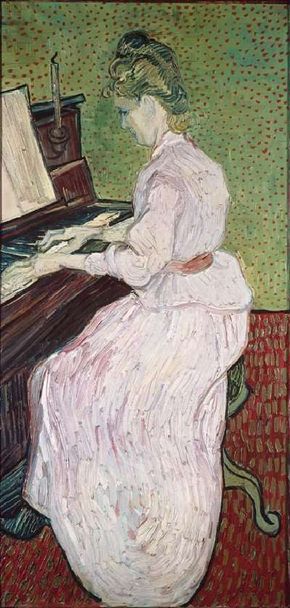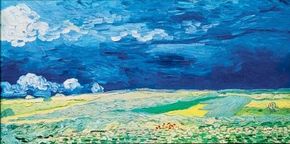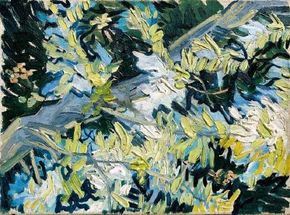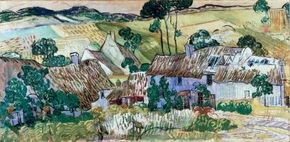Vincent van Gogh left the asylum in Saint-Rémy on May 17, 1890, and boarded a northbound train to travel to Auvers-sur-Oise, where he lived near the home of the physician Paul Gachet. An amateur artist and enthusiastic collector of contemporary painting, Gachet offered Vincent sympathetic companionship as well as supervisory care. The picturesque village also boasted a long artistic tradition; Honoré Daumier, Camille Corot, and Paul Cézanne had all worked there, and Charles-François Daubigny -- one of the Barbizon painters who had pioneered plein air painting -- had made it his home.
Living in a rented room in an inn near Gachet's residence, Vincent was grateful for the physician's encouragement and support. He began to paint immediately, setting up his easel in Gachet's garden. At first Vincent feared that he would have neither the strength nor the confidence to carry out his painting, but those feelings rapidly disappeared as he worked with his characteristic absorption and productivity. In the weeks from mid-May through the end of June, he painted more than 30 canvases, including scenes of the village, landscapes painted in the fields that surrounded the city, and close studies of ears of wheat and acacia branches.
Advertisement
In particular van Gogh was obsessed with the wheat fields outside the town. In a letter to his mother and his sister Wil, he declared that he was completely absorbed in the subject; in the same letter he informed them that his calm mood was in perfect accord with the placid fields. But his description of his new paintings to his brother Theo struck a different tone. He wrote: "There are vast fields of wheat under troubled skies, and I did not need to go out of my way to express sadness and extreme loneliness." These words took on a new poignancy when, on July 27, Vincent shot himself in the wheat fields where he had set up his easel.
Follow the links below to learn more about some of Vincent van Gogh's final paintings.
Wheatfield with Crows: Wheatfield with Crows, by Vincent van Gogh, was one of the studies of the fields surrounding Auvers-sur-Oise, which fascinated van Gogh. Read about van Gogh's dramatic landscape Wheatfield with Crows.
Portrait of Dr. Gachet: Vincent van Gogh's Portrait of Dr. Gachet depicts van Gogh's new friend in Auvers-sur-Oise, the amateur artist Paul Gachet. Read about van Gogh's Portrait of Dr. Gachet.
Ears of Wheat: Ears of Wheat, by Vincent van Gogh, is notable for its lack of horizon or context. Read about van Gogh's Ears of Wheat, emblematic of van Gogh's approach to nature paintings.
Undergrowth with Two Figures: Undergrowth with Two Figures reflects van Gogh's belief in the importance of human companionship, something van Gogh rarely experienced in his own life. Learn about Undergrowth with Two Figures, van Gogh's poignant study of human relationships.
Almond Blossom: Almond Blossom, by Vincent van Gogh, reveals van Gogh's continuing interest in Japanese art. Read about Almond Blossom, painted in honor of the birth of van Gogh's nephew.
Butterflies and Poppies: Vincent van Gogh's Butterflies and Poppies is notable for its resemblance to textile art. Read about van Gogh's 1890 painting, Butterflies and Poppies.
Old Man in Sorrow (On the Threshold of Eternity): Old Man in Sorrow (On the Threshold of Eternity), by Vincent van Gogh, is one of the best known depictions of human sadness in all of art. Read about van Gogh's Old Man in Sorrow, which can be seen as a reflection of van Gogh's own melancholic state during his later years.
Irises: Vincent van Gogh's Irises represents the artist's lifelong interest in exploring the possibilities of color. Read about Irises, which van Gogh painted while still in the asylum of Saint-Rémy.
Road with Cypress and Star: Road with Cypress and Star, by Vincent van Gogh, found the artist returning to familiar subjects in nature. Learn about van Gogh's Road with Cypress and Star, which represents a village road outside of Auvers-sur-Oise.
Meadow in the Garden of Saint-Paul Hospital: Vincent van Gogh's Meadow in the Garden of Saint-Paul Hospital is one of the last paintings van Gogh completed while at the asylum in Saint-Rémy. Learn about van Gogh's famous post-Impressionist painting, Meadow in the Garden of Saint-Paul Hospital.
Landscape at Twilight: Vincent van Gogh's Landscape at Twilight contains his trademark use of the color yellow. Read about the 1890 painting, Landscape at Twilight, by Vincent van Gogh.
Dr. Gachet's Garden: Dr. Gachet's Garden, by Vincent van Gogh, was one of the first works van Gogh painted upon arriving in Auvers-sur-Oise. Learn about Dr. Gachet's Garden, which was set in the backyard of van Gogh's doctor and friend.
Houses at Auvers: Vincent van Gogh completed Houses at Auvers shortly after arriving in his new town. Learn about van Gogh's Houses at Auvers, which some critics see as a sign of van Gogh's increased, though short-lived, stability while in Auvers-sur-Oise.
Pink Roses: Vincent van Gogh's Pink Roses is reflective of his lifelong interest in still-life floral arrangements. Learn about the post-Impressionist painting, Pink Roses, by Vincent van Gogh.
Marguerite Gachet in the Garden: Vincent van Gogh's Marguerite Gachet in the Garden is one of nearly 80 paintings van Gogh completed in his brief time at Auvers-sur-Oise. Learn about Marguerite Gachet in the Garden, a portrait of the daughter of van Gogh's friend, Paul Gachet.
Daubigny's Garden: Vincent van Gogh's Daubigny's Garden is a portrayal of the garden of the plein air painter Charles-François Daubigny. Read about Van Gogh's 1890 painting, Daubigny's Garden.
The Church at Auvers-sur-Oise: The Church at Auvers-sur-Oise, by Vincent van Gogh, finds the artist at the height of his command of color. Read about The Church at Auvers-sur-Oise, which van Gogh himself believed was reflective of his maturing style.
Landscape with Carriage and Train in the Background: Vincent van Gogh's Landscape with Carriage and Train in the Background is unusual in that van Gogh eschewed the bright yellows of most of his paintings for more muted tones. Read about Vincent van Gogh's Landscape with Carriage and Train in the Background.
Marguerite Gachet at the Piano: Marguerite Gachet at the Piano is one of several portraits van Gogh made of his friend Paul Gachet's daughter. Learn about Marguerite Gachet at the Piano, which shows evidence of Neo-Impressionist influence on van Gogh's work.
Wheatfield Under Thunderclouds: Vincent van Gogh's Wheatfield Under Thunderclouds takes on a greater poignancy considering it was completed shortly before van Gogh committed suicide. Read about van Gogh's famous landscape, Wheatfield Under Thunderclouds.
Blossoming Acacia Branches: Blossoming Acacia Branches is notable for its near-abstract quality. Learn about Blossoming Acacia Branches, by Vincent van Gogh, which some critics see as a fusion of multiple influences on the artist's work.
Farm near Auvers: Vincent van Gogh's Farm near Auvers is one of several works van Gogh painted of the countryside surrounding Auvers-sur-Oise. Learn about Farm Near Auvers, which some believe remained unfinished at the time of the great artist's death.
The first painting we'll look at portrays a wheat field, one of the enduring symbols of Vincent van Gogh's time in Auvers-sur-Oise.
To learn more about art, famous artists, and art history, check out:
Advertisement
